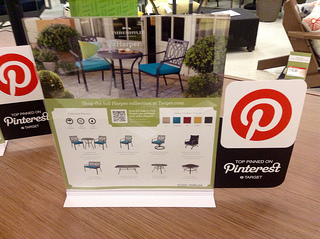 Pinterest is an effective social media marketing tool, but few brands are actually using it effectively to connect with their target audiences.
Pinterest is an effective social media marketing tool, but few brands are actually using it effectively to connect with their target audiences.
Before you launch your Pinterest marketing initiatives, consider how your audience uses Pinterest. It’s used differently by different groups of people, and it’s used differently than any other social media site.
For example, people pin content in a fairly structured manner. Pins are related to categories in users’ minds and those categories turn into Pinterest boards. The same piece of content could be categorized in many different ways depending on the audience and the usage. That self-identified categorization system is also useful in helping people find content on Pinterest, particularly through their Pinterest feeds.
Not only do you need to create boards related to your brand that are interesting to your target audience, but you need to put yourself in their minds and create boards and content using a relevant system of categorization. Most importantly, categories should be well integrated, so you can lead visitors through your brand story. Think of categorization as your brand’s visual map.
Next, you need to pin a lot of interesting content, pin the best type of visuals, share other people’s pins, invite others to pin content on special brand boards, and interact with other users. When you pin content, keep your target audience’s categorization systems in mind. How do they use your pins? How do they categorize their own pins? How do they categorize your pins and your competitors’ pins?
When you publish a pin, include a relevant description that makes it easier for people to identify how to categorize it in their own minds and within their own Pinterest activities. Avoid over-using keywords and hashtags that force a categorization to your pins.
Pinterest published a Pinterest Best Practices Guide for Businesses that offers excellent tips for writing great pin descriptions:
- If your products are used in DIY projects, pin images of those projects and describe what the product or item is, how it was made, and what materials people need to make it themselves.
- If your products are related to food, cooking, or dining, pin images of completed dishes with descriptions of recipes and ingredients.
- If your products are related to fashion, pin images of clothing or accessories along with descriptions of the designers, season to wear it, style suggestions, and more.
- If your products are related to travel, pin images of the location and describe the activities that people can do there.
- If your products are related to design, pin images of design steps and results with the designer’s name, tools, tips, location, materials used in the design, and so on.
As with all brand marketing, the trick is getting out of your own head and out of the corporate point of view. Think and categorize like your target audience, and your Pinterest initiatives will drive improved results.
Image: Mike Mozart licensed CC BY 2.0
Lucy is Editor at Corporate Eye


